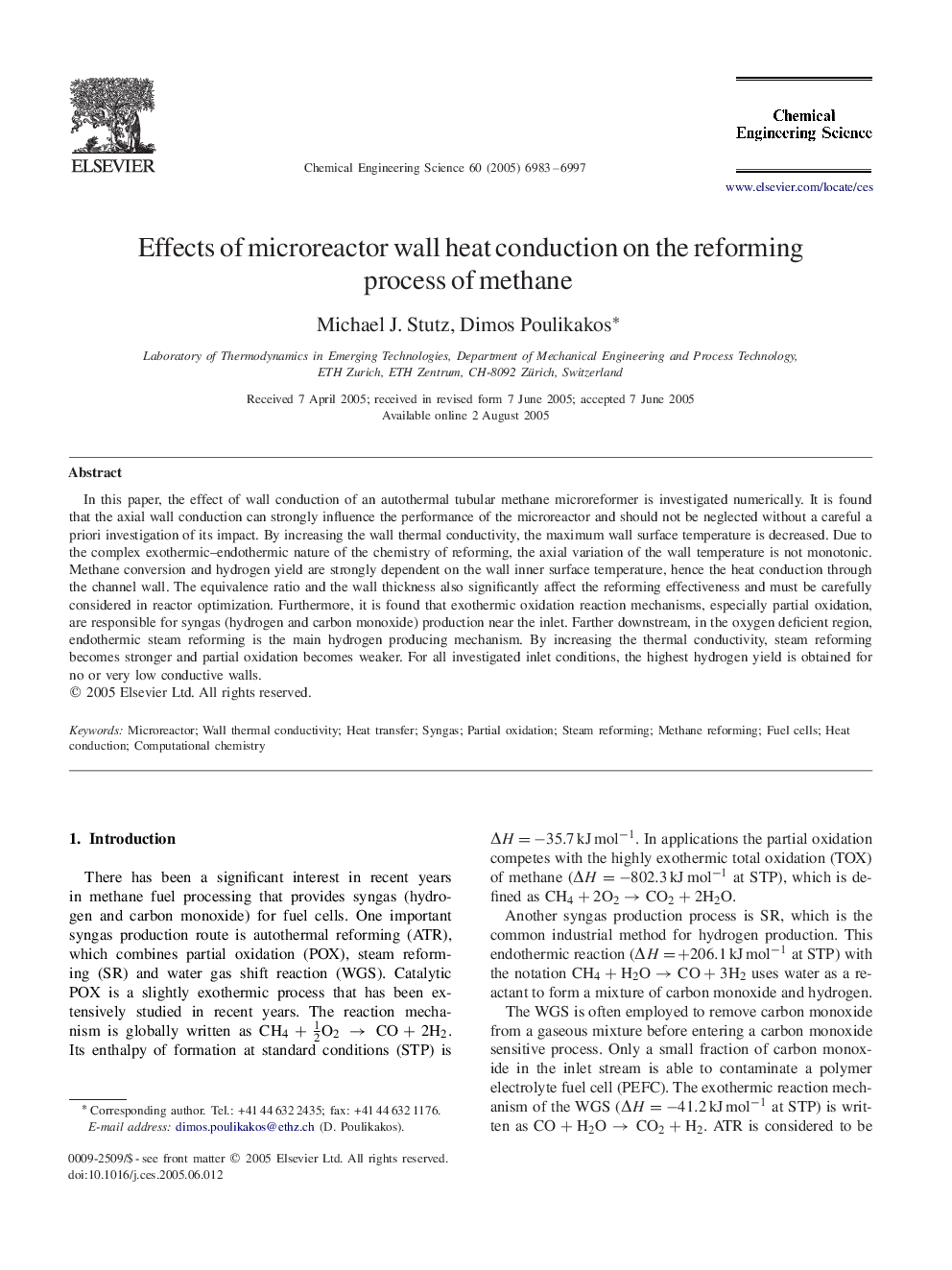| کد مقاله | کد نشریه | سال انتشار | مقاله انگلیسی | نسخه تمام متن |
|---|---|---|---|---|
| 160158 | 457064 | 2005 | 15 صفحه PDF | دانلود رایگان |

In this paper, the effect of wall conduction of an autothermal tubular methane microreformer is investigated numerically. It is found that the axial wall conduction can strongly influence the performance of the microreactor and should not be neglected without a careful a priori investigation of its impact. By increasing the wall thermal conductivity, the maximum wall surface temperature is decreased. Due to the complex exothermic–endothermic nature of the chemistry of reforming, the axial variation of the wall temperature is not monotonic. Methane conversion and hydrogen yield are strongly dependent on the wall inner surface temperature, hence the heat conduction through the channel wall. The equivalence ratio and the wall thickness also significantly affect the reforming effectiveness and must be carefully considered in reactor optimization. Furthermore, it is found that exothermic oxidation reaction mechanisms, especially partial oxidation, are responsible for syngas (hydrogen and carbon monoxide) production near the inlet. Farther downstream, in the oxygen deficient region, endothermic steam reforming is the main hydrogen producing mechanism. By increasing the thermal conductivity, steam reforming becomes stronger and partial oxidation becomes weaker. For all investigated inlet conditions, the highest hydrogen yield is obtained for no or very low conductive walls.
Journal: Chemical Engineering Science - Volume 60, Issue 24, December 2005, Pages 6983–6997